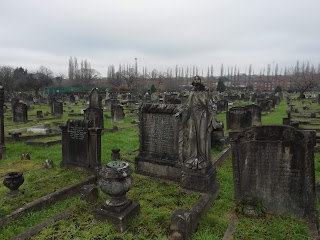St Bartholomew The Great Church, City of London
Visited August 2021
In the heart of Smithfields, by the market and Barts Hospital is St Bartholomew the Great, the oldest surviving parish church in London, dating back to the time of Henry I in the 12th century. It was founded by Prince Rahere, whose (later) tomb is still in the church. Although damaged through the centuries, including in the dissolution of the priories in 1539, much of the original building has survived and subsequent restorations have, for the most part, been faithful to the original. It's easily recognisable from its many appearances on tv and film, from Shakespeare in Love to the League of Gentlemen.
There is a small remainder of the burial ground outside with a few intact headstones, but the main memorials survive inside, with a splendid array of carved memorial stones around the walls from the 16th century onwards. The lighting in some parts of the church is quite dark, but most memorials are well lit and legible. Unlike many City churches, St Barts is open every day for visitors as well as for prayer. The Romanesque architecture and atmospheric interior make it well worth a visit as well as the memorials, and there's also a selection of contemporary art, including an incredible Damien Hirst of the flayed St Bartholomew, which really have to be seen.
 |
| Tomb of the founder of Bartholomew the Great, Prince Rahere |


















































